
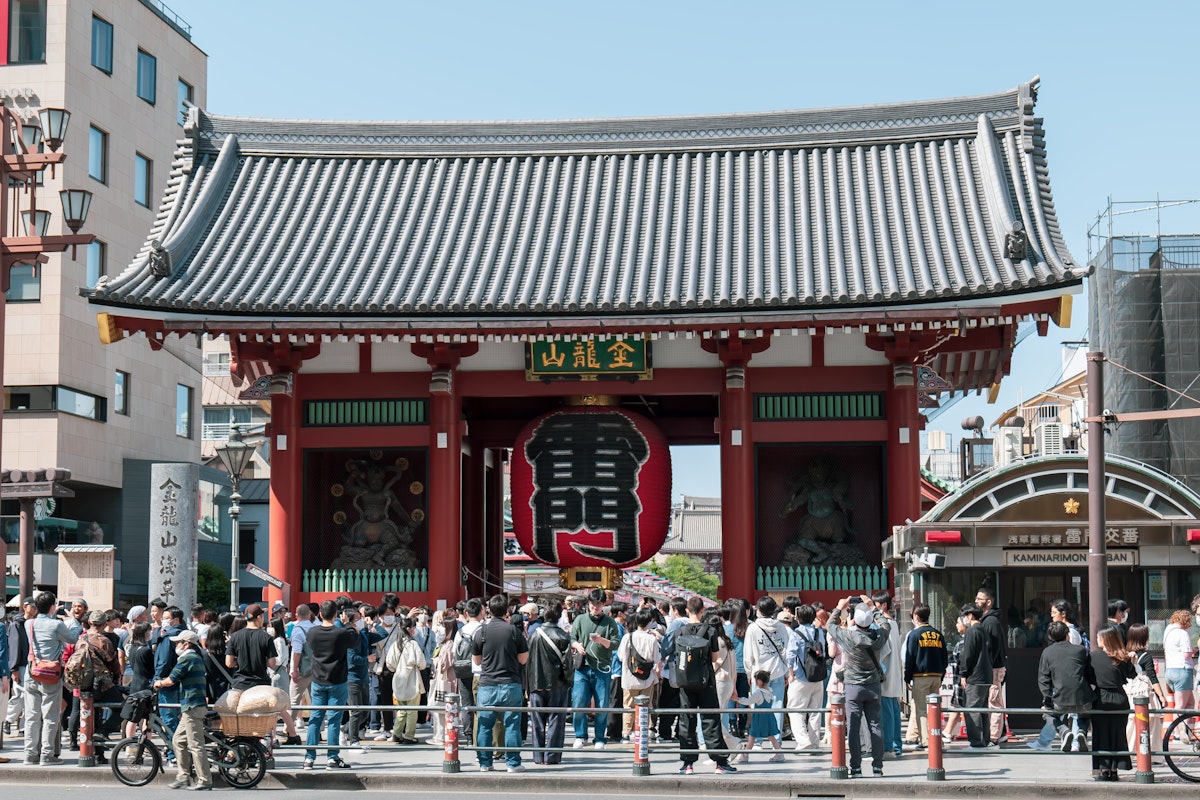
Tokyo's vibrant cityscape fuses modernity and tradition. Cherry trees and skyscrapers coexist with serene temples and shrines.
These sacred sites offer a tranquil sanctuary, letting you momentarily step away from the hustle and bustle of urban life. As you explore their profound history and spiritual significance, take a deep breath and savor the moment.
Tokyo has many temples and shrines to explore, and we've put together a list of the best 10 for you to visit during your trip.
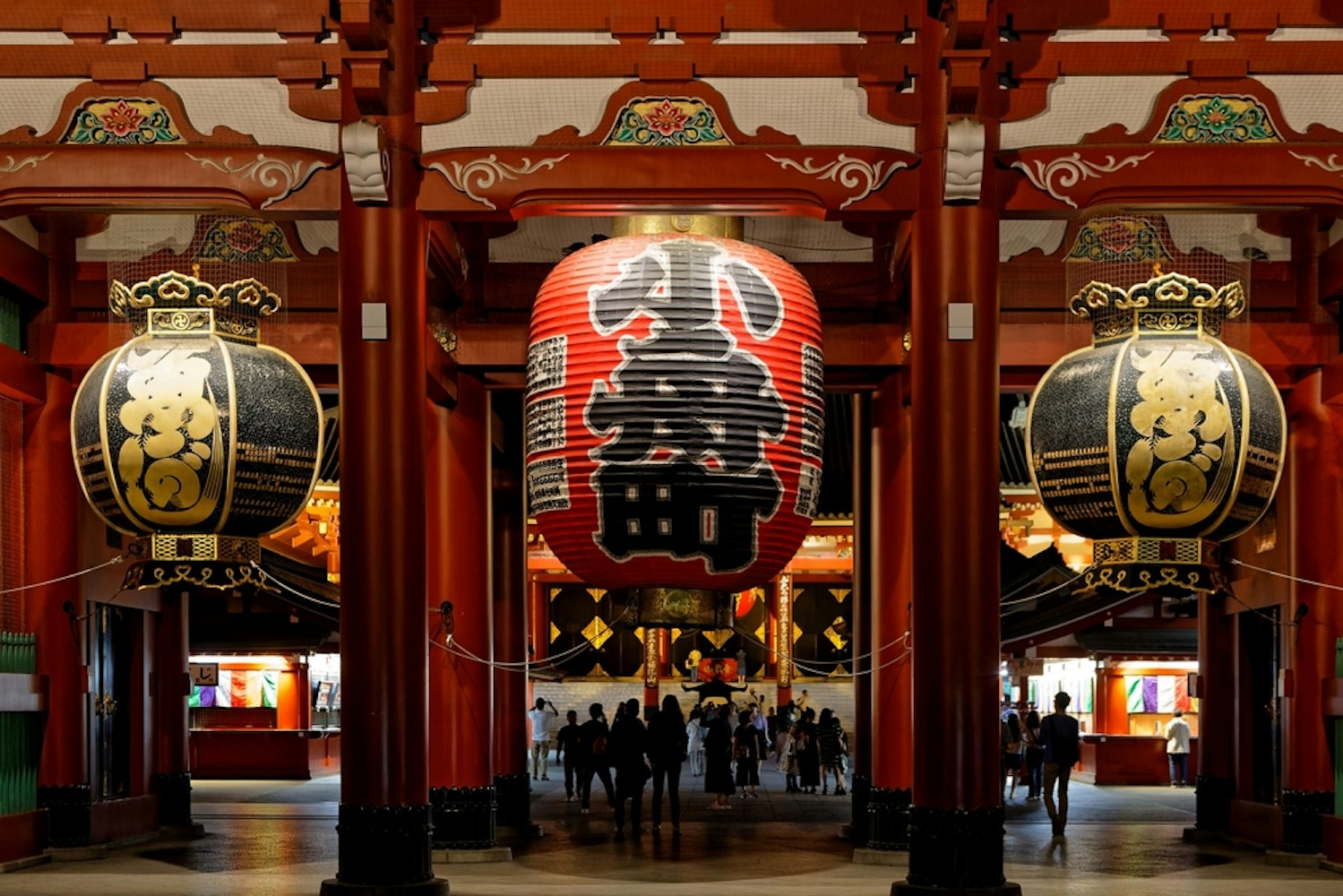
Senso Ji symbolizes resilience and faith. The vibrant Shinto shrine within its precincts is a testament to Japan's syncretic religious practices.
Sensoji is Tokyo's most renowned and frequently photographed temple and the city's oldest Buddhist temple. The Kaminarimon Gate, with its massive red lantern, marks the entrance to this sacred space and attracts tourists from around the world.
This venerable site is famed for its iconic five-story pagoda. Trails of incense waft through the air, creating a mystical ambiance.
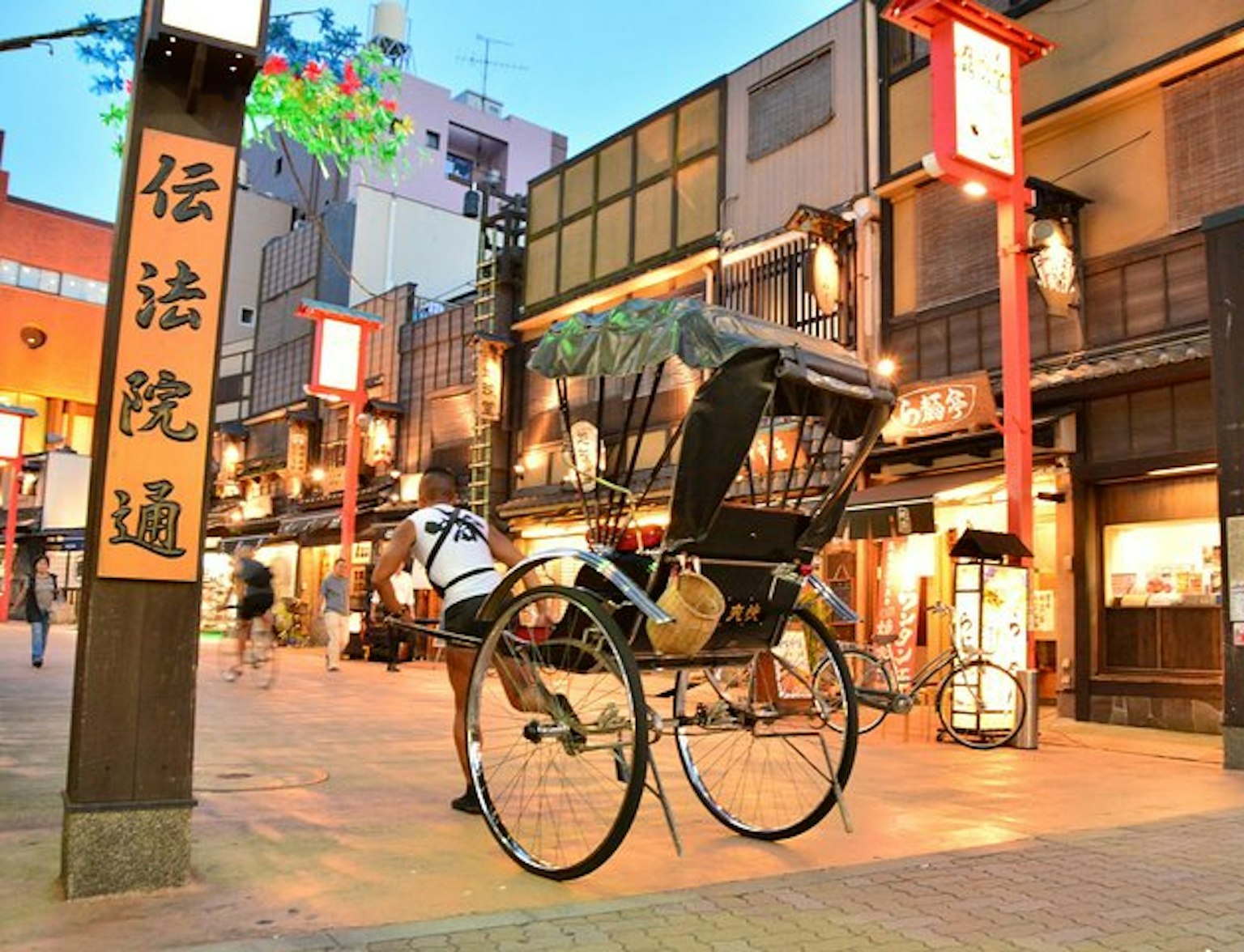
Visit Sensoji Temple with a rickshaw ride.
The temple's vast eaves are a striking architectural feature. Together, these elements evoke a sense of historical Tokyo.
A visit here is like stepping back into an era long past. The temple serves as a bridge between modern Tokyo and its rich, ancient heritage.
Belief/Faith: Buddhism
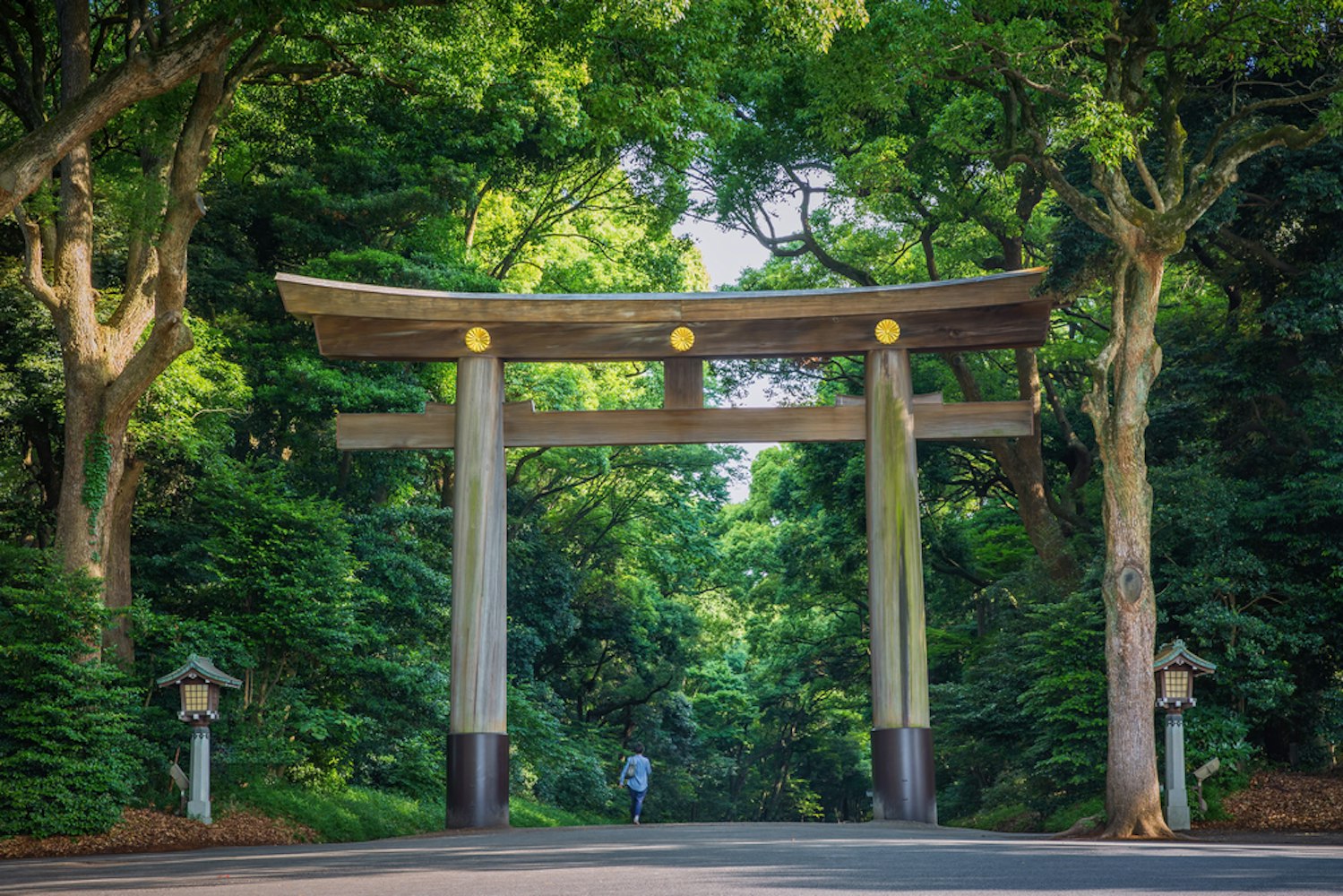
Dedicated to Emperor Meiji and Empress Shoken, this shrine is a peaceful retreat in the heart of Tokyo. Surrounded by lush greenery, it's a prime example of Shinto shrines blending into nature.
The Meiji Jingu Shrine is a revered Shinto place of worship. Constructed in 1920, it pays homage to the divine souls of Emperor Meiji and his beloved Empress Shōken.
Following the main entrance, the inner gate enhances visitors' experience as they transition from the bustling city into a tranquil space dedicated to Emperor Meiji and Empress Shoken. This significant shrine stands prominently in central Tokyo.
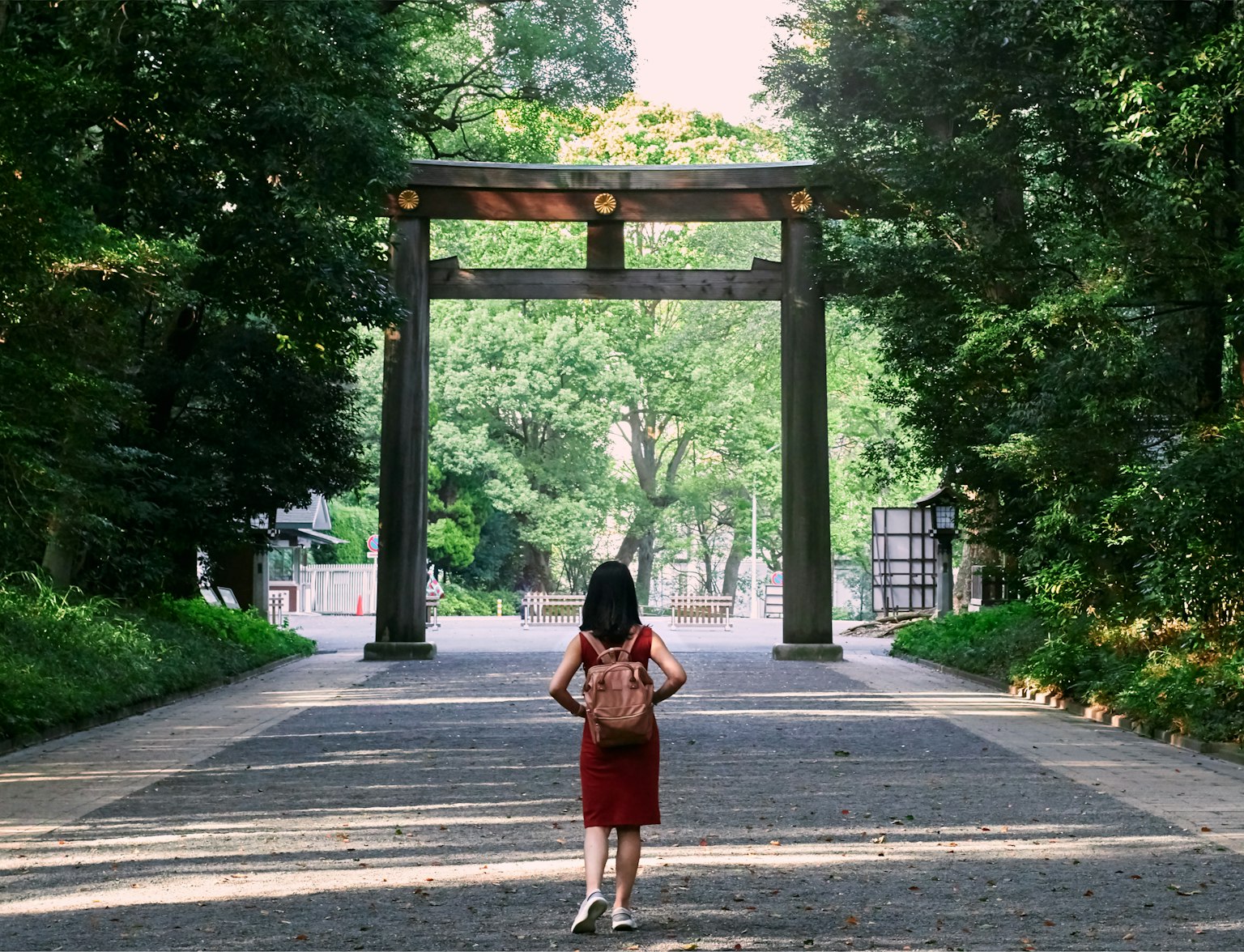
Immerse Yourself in the Spiritual Ambience of Meiji Jingu Shrine.
The shrine covers an impressive 172 acres. A lush forest of approximately 170,000 trees surrounds it, creating a tranquil oasis in the city.
It is renowned for its spiritual significance and is Japan's most celebrated Shinto shrine. The Meiji Jingu Shrine is a testament to Japan's rich cultural and religious heritage.
Belief/Faith: Shintoism
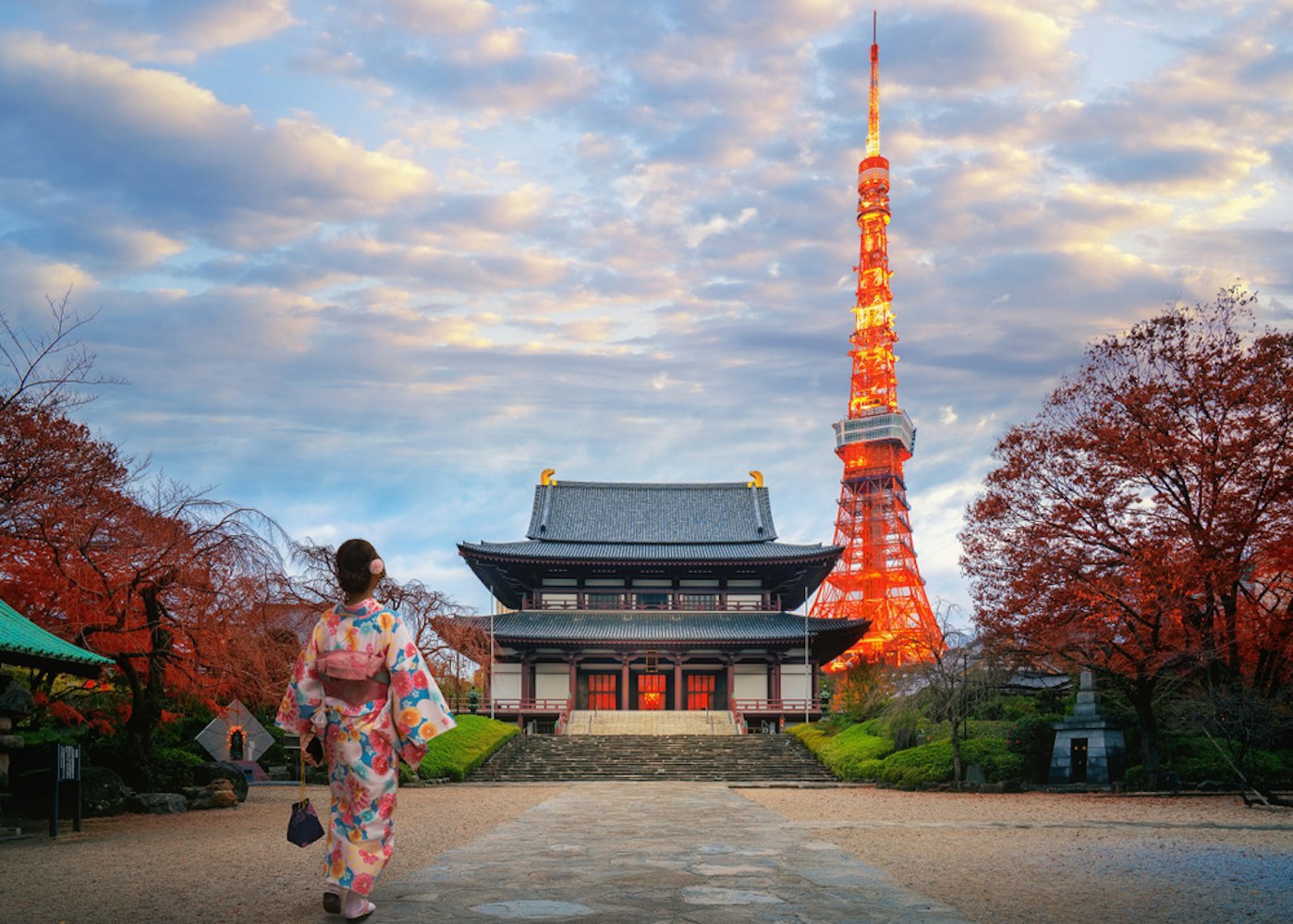
Located near Tokyo Tower, Zojoji is notable for its history with the Tokugawa shogunate. The main hall and the serene surroundings offer a stark contrast to the nearby modernity.
Zojoji Temple stands as a magnificent temple complex in the heart of Tokyo. It is notably the final resting place of six Tokugawa shoguns, adding to its historical significance.
The temple's main entrance gate, Sangedatsumon, is a remarkable example of traditional Buddhist architecture. This gate's presence is striking, especially amid central Tokyo's modern landscape, highlighting its historical and architectural significance.
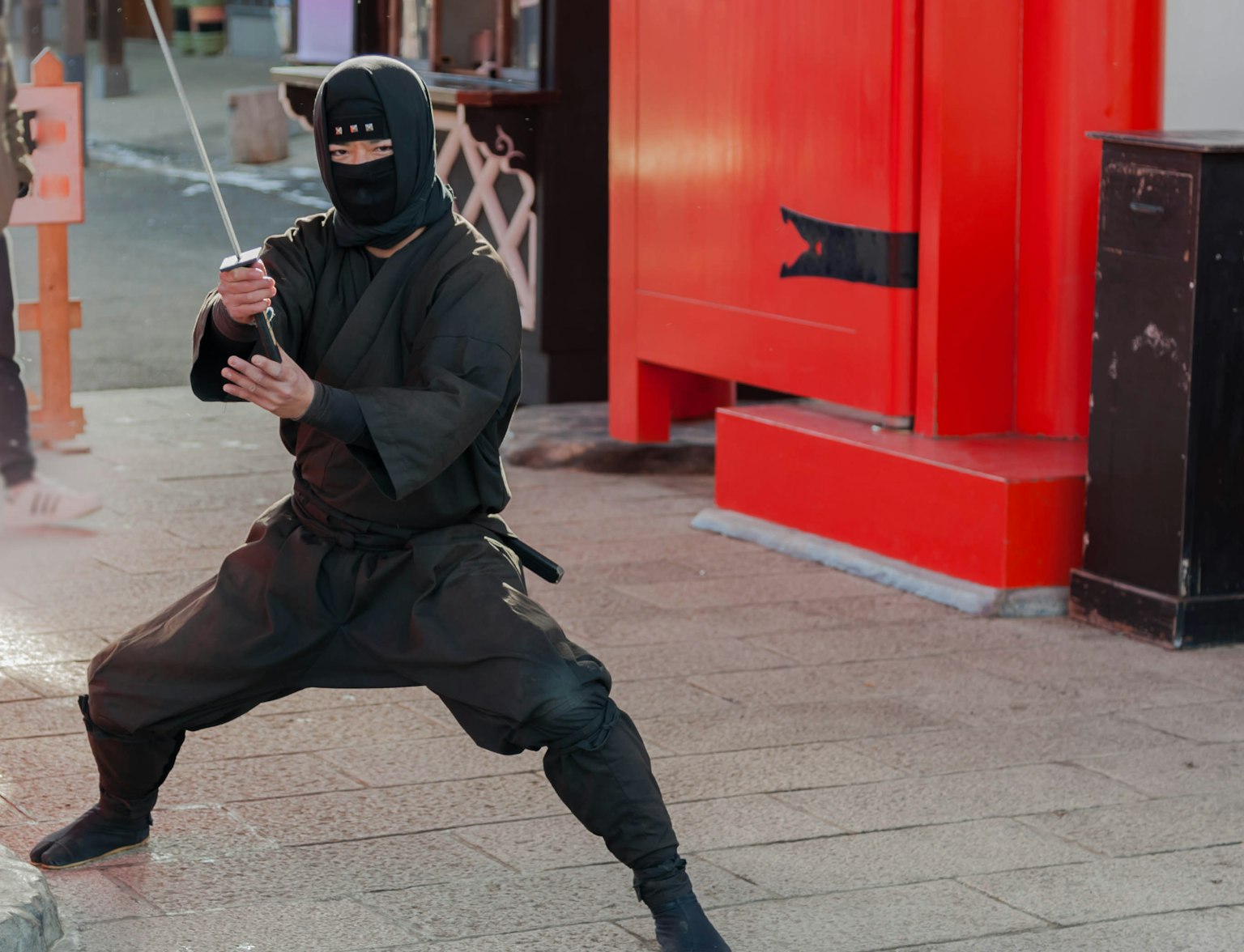
Stroll through the peaceful pathways of the Zojoji Temple.
Sangedatsumon's design and structure are a testament to ancient Japan's architectural prowess. Remarkably, it is the sole surviving structure of the temple complex from World War II.
The bombings of WW2 had a significant impact on the city, yet Sangedatsumon withstood these events. Today, Zojoji Temple, with its Sangedatsumon, remains a symbol of resilience and historical continuity in Tokyo.
Belief/Faith: Buddhism
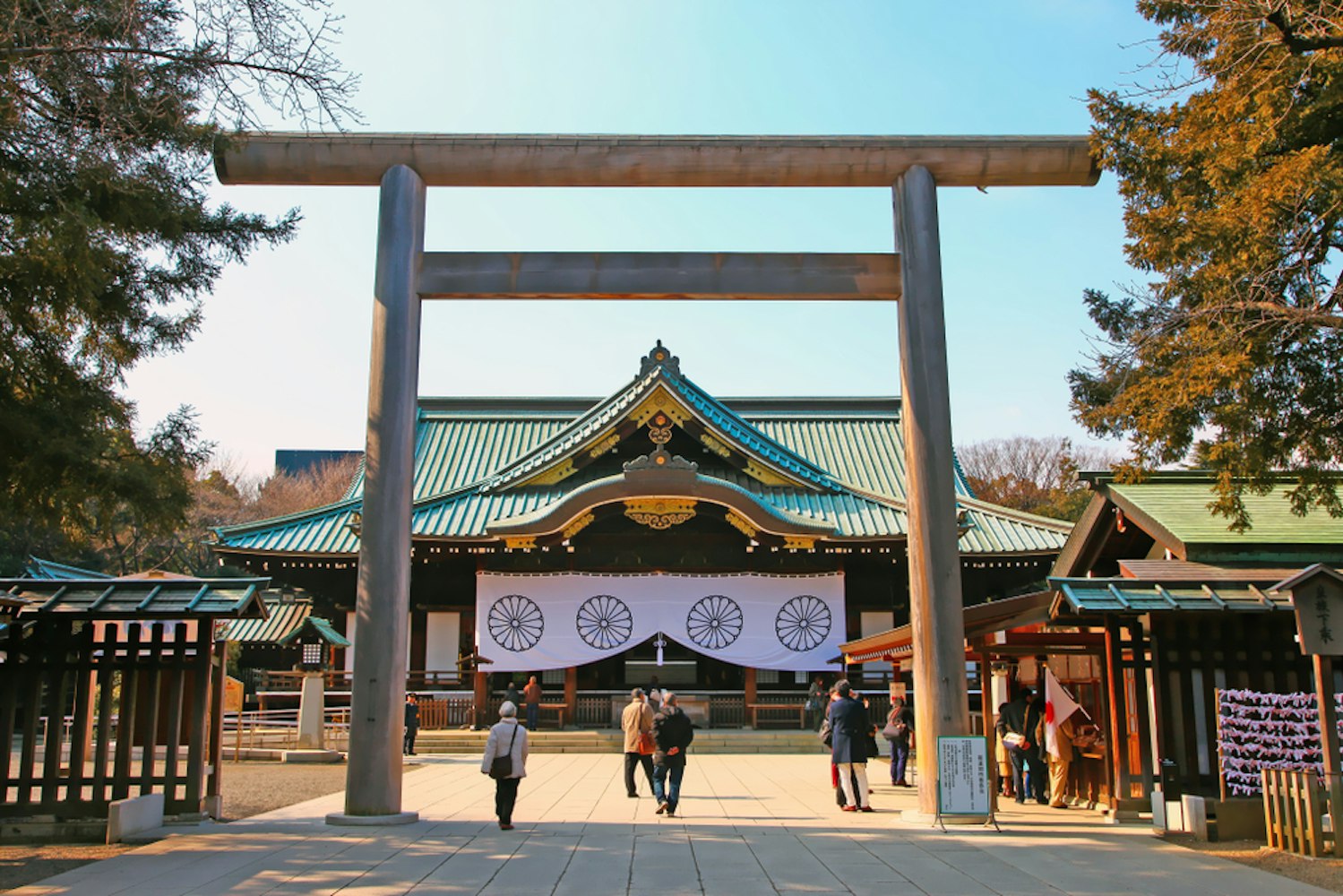
This controversial site, dedicated to those who died in World War II, offers a complex view of Japan's history. The Yasukuni Jinja is surrounded by history and political nuances.
The Yasukuni Shrine, located in Tokyo, Japan, is a revered Shinto place of worship. Its foundation dates back to 1869, marking a significant era in Japanese history.
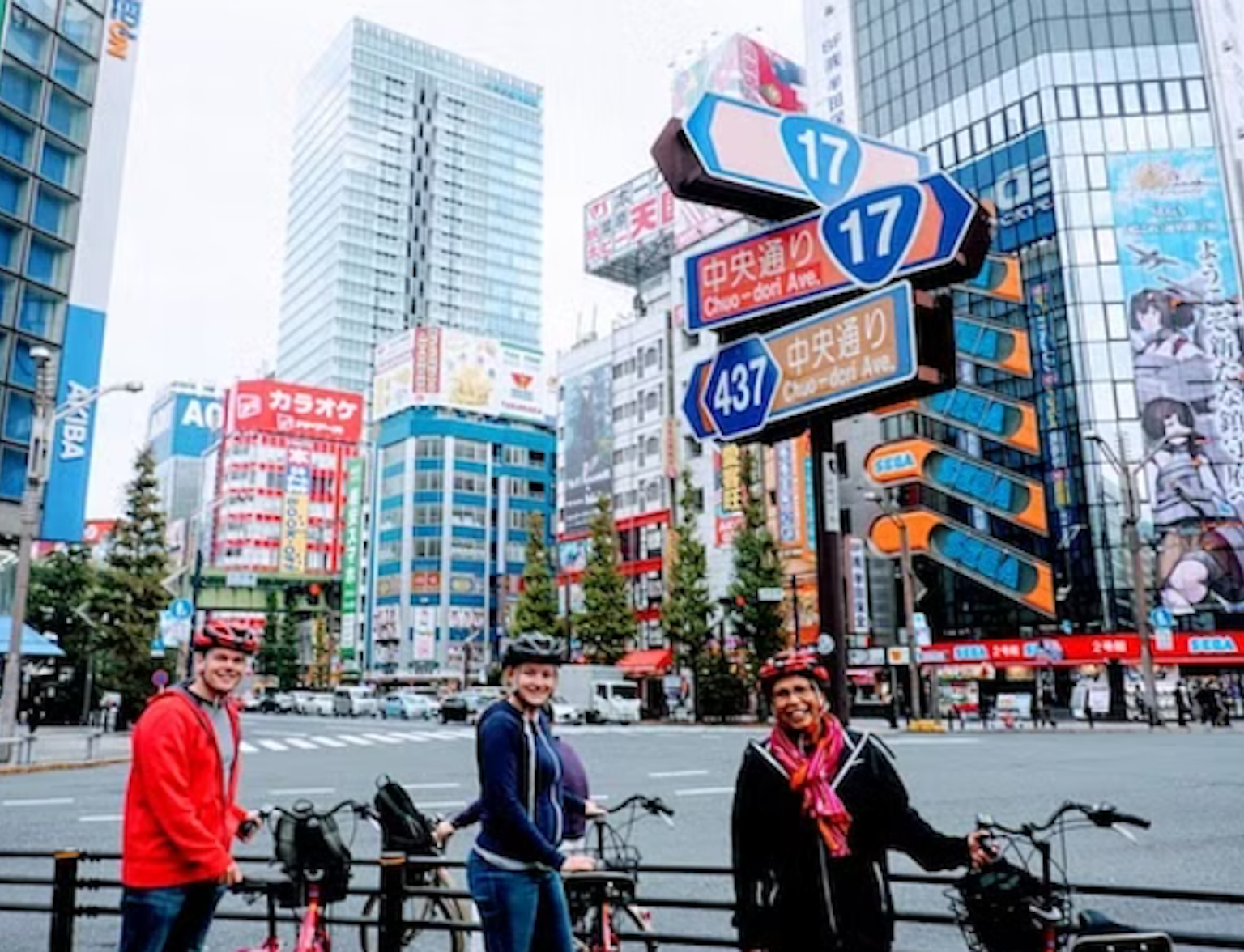
Discover the historical significance of Yasukuni Shrine.
The shrine's primary purpose was to commemorate and honor the soldiers who lost their lives fighting for the Emperor. These soldiers fought bravely during the Boshin War, a pivotal conflict in Japanese history.
Initially, this shrine bore a different name, Tōkyō Shōkonsha. This name, Tōkyō Shōkonsha, holds a significant meaning: "shrine to summon the souls."
It reflects the shrine's role in the spiritual realm of Shinto beliefs. Over time, it evolved into Yasukuni Shrine, a name it carries with honor and reverence today.
Belief/Faith: Shintoism
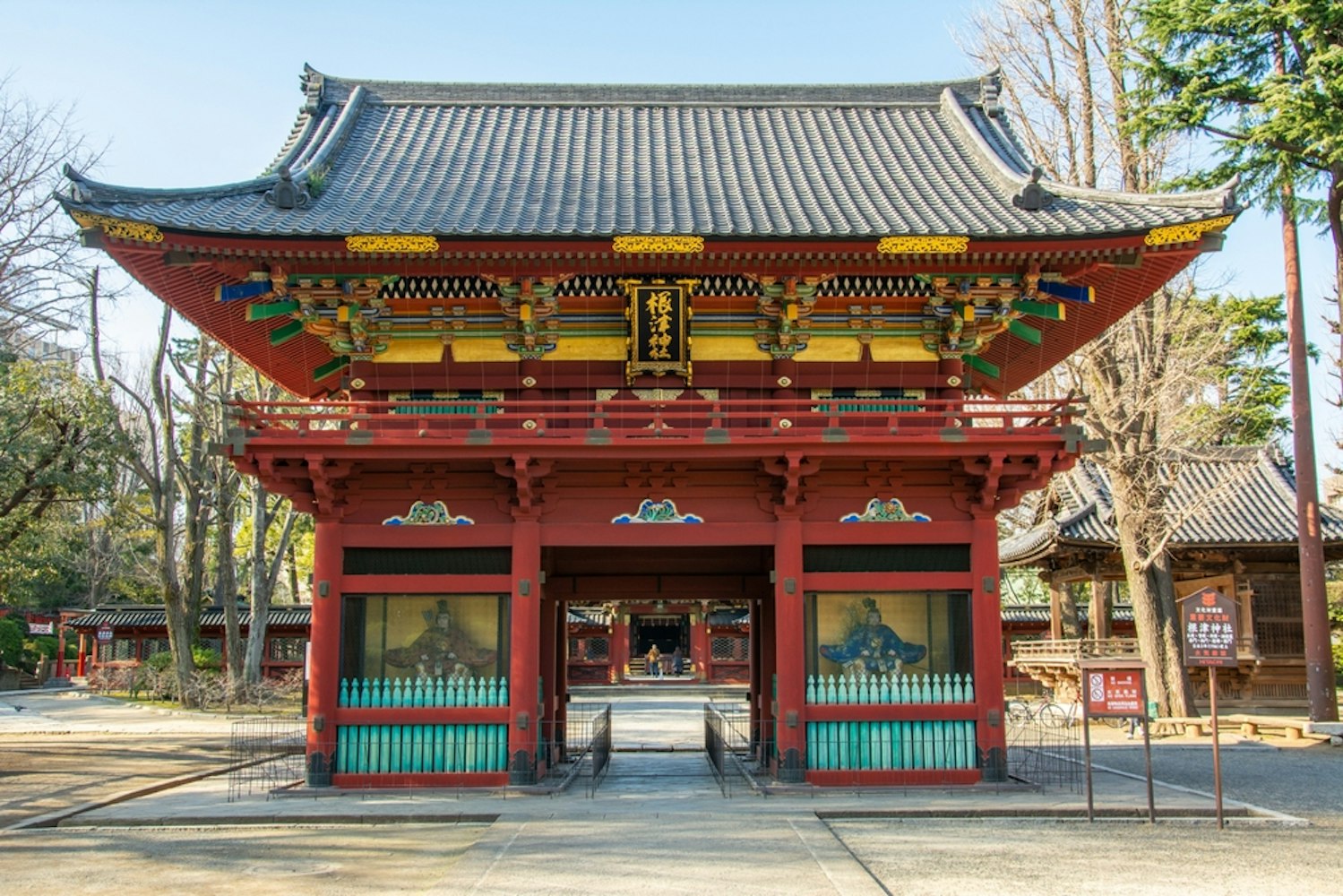
Known for its azalea festival, the Nezu Shrine is a gem in Tokyo's spiritual landscape. This Shinto shrine is a perfect spot for experiencing cedar stick-burning ceremonies.
Nezu Shrine, or Nezu-jinja, is a renowned Shinto shrine in Tokyo, Japan. This historic shrine is in the Bunkyō ward, just northwest of the famous Ueno Park.
It stands out as one of Tokyo's oldest Shinto shrines, established in 1705. The shrine is devoted to the deity of winds and seas, which marks its spiritual significance.
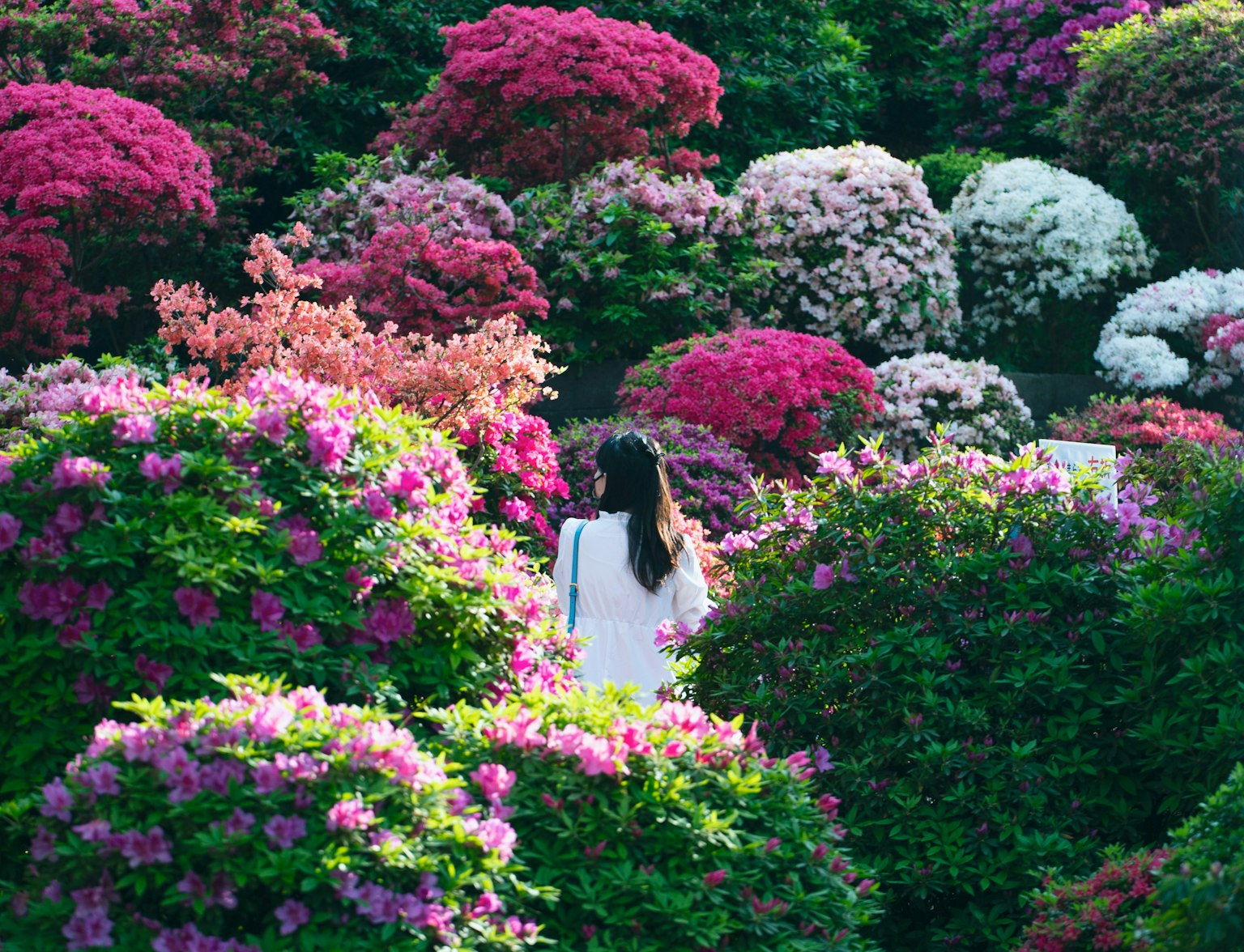
Nezu shrine invites you with its iconic red torii gates and the vibrant bloom of azaleas in the early summer.
Notably, Nezu Shrine is revered as a cultural heritage site, having remarkably survived the ravages of war. The shrine is mainly celebrated for hosting its vibrant Azalea Spring Festival annually.
This festival occurs from late April to May and showcases a stunning display of about 50 varieties of azaleas in full bloom. Alongside the floral spectacle, the festival features an array of food stalls and entertaining games for visitors.
Visitors can also engage with various temple traditions, adding to the cultural and ceremonial experience.
Belief/Faith: Shintoism
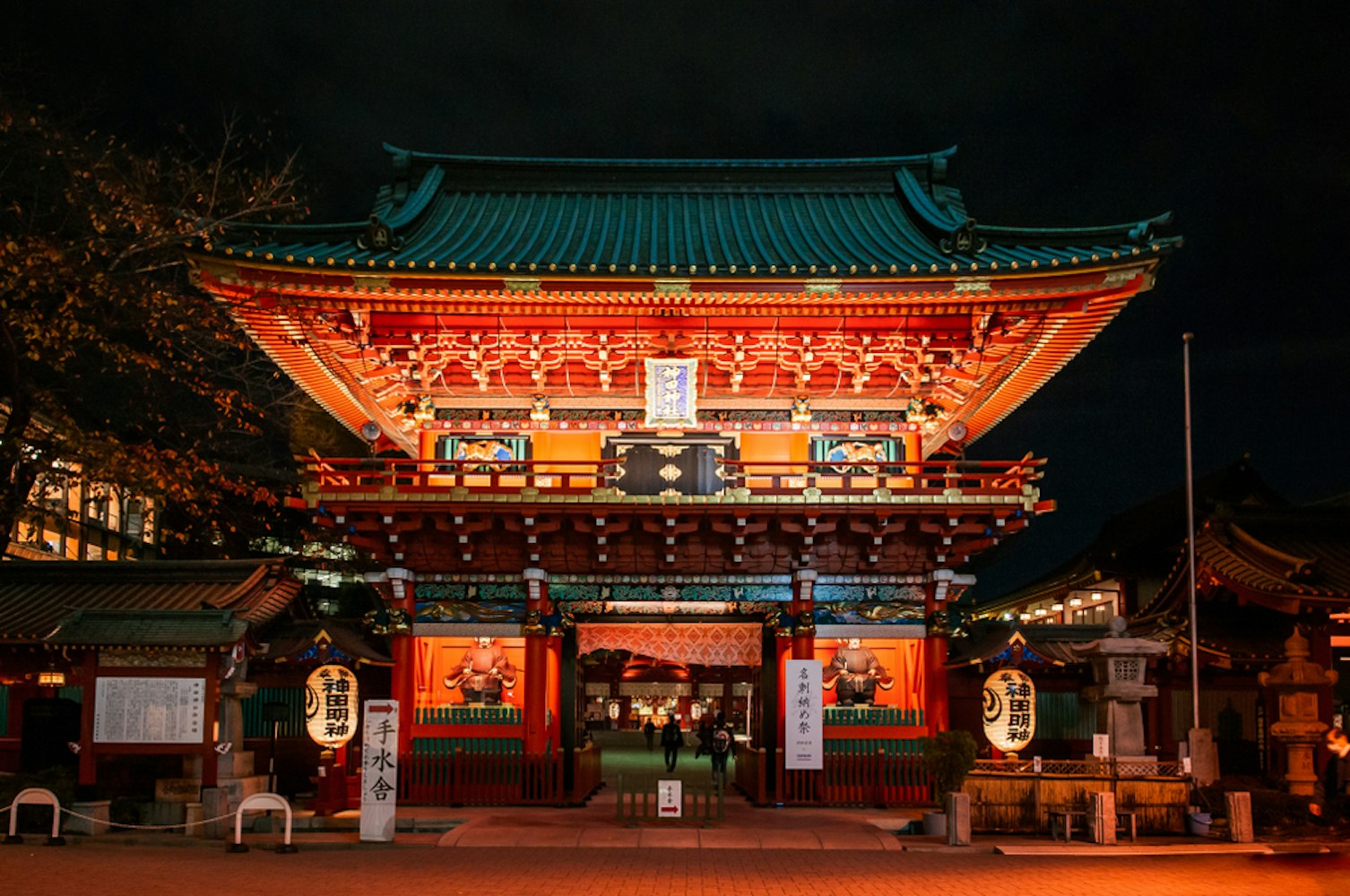
This shrine, near Akihabara, is known for its association with good relationships and technology. It's a unique blend of the old and the new.
The Kanda Myojin Shrine boasts a rich history that spans almost 1,300 years. It was established in 730, near what is now known as Otemachi.
Over the centuries, this shrine has stood as a testament to Japan's enduring cultural heritage. During the Edo period, which lasted from 1603 to 1867, the shrine was relocated to its current site.
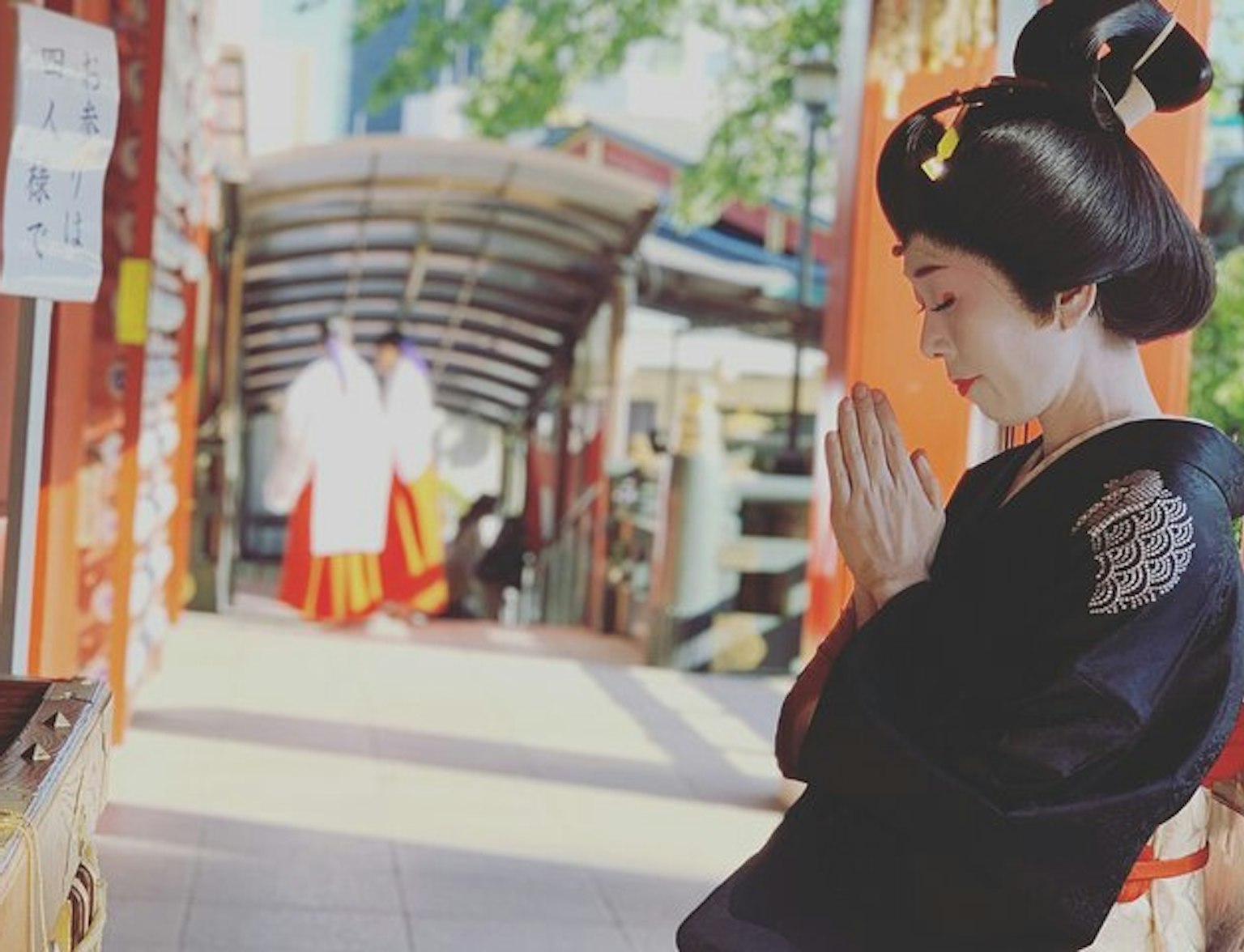
Unlock the secrets of Tokyo's spiritual heart with an exclusive tour of Kanda Myojin Shrine.
This move marked a significant chapter in the shrine's long history. Shogun Tokugawa Ieyasu was one of the most notable visitors.
It is said that he paid his respects at Kanda Myojin, honoring its spiritual significance. The shrine remains revered today, reflecting Japan's rich traditions and historical depth.
Belief/Faith: Shintoism
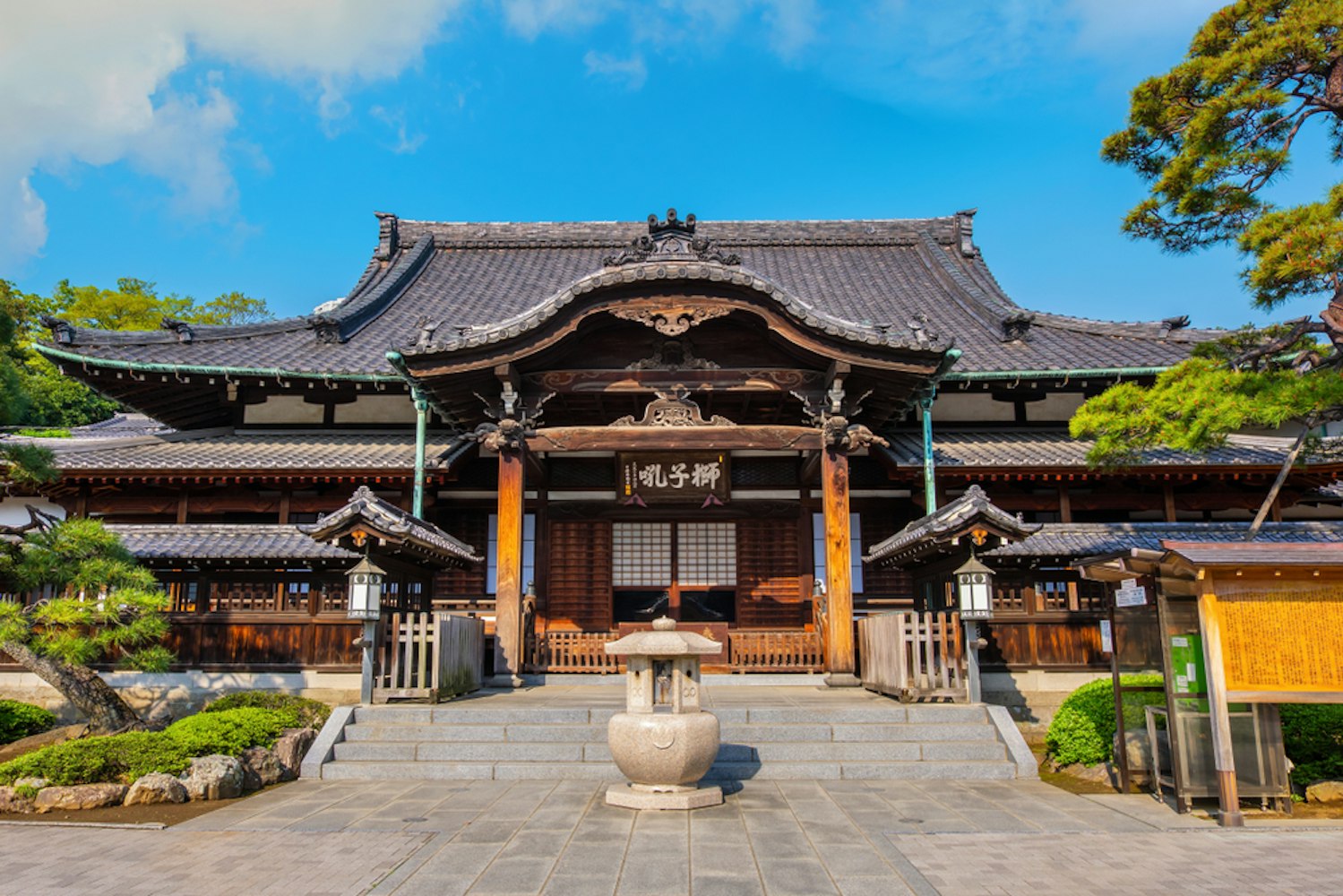
Famous for the story of the 47 Ronin, Sengakuji is a site where history and legend converge. The main hall and the gravesite are poignant reminders of loyalty and honor.
Sengakuji Temple, situated in Minato City, is an important center for the Soto Zen branch of Buddhism. It is famously recognized as the burial site of the 47 ronin, a group revered in Japanese folklore.
This historic temple was established in 1612, close to the Edo Castle. However, a devastating fire destroyed it.
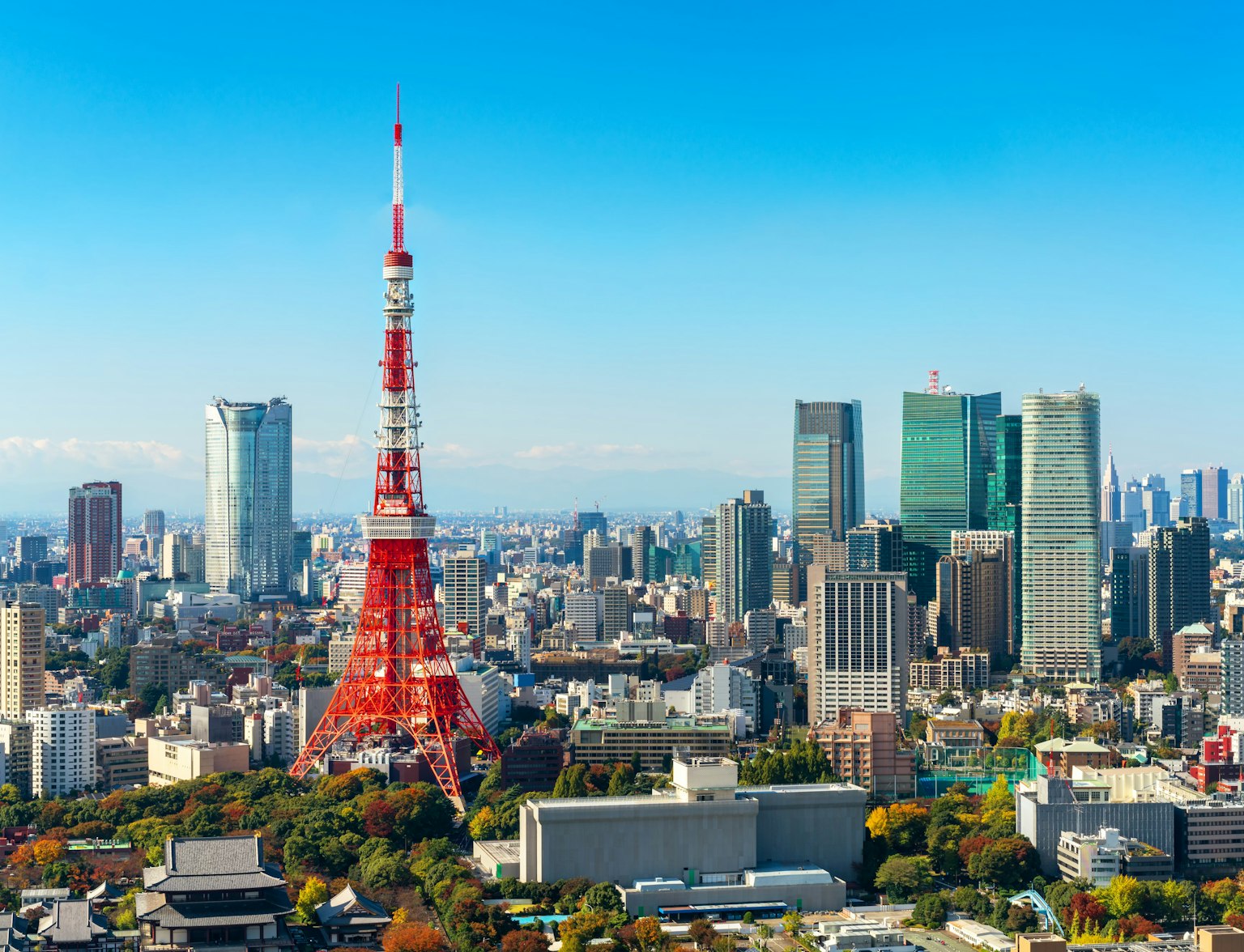
Visit Sengakuji with a private vehicle.
In response to this calamity, Sengakuji was relocated. The temple found its new home at its current location.
Subsequently, it underwent a comprehensive reconstruction in 1641. Today, it remains a significant cultural and spiritual landmark, steeped in history and reverence.
Belief/Faith: Buddhism
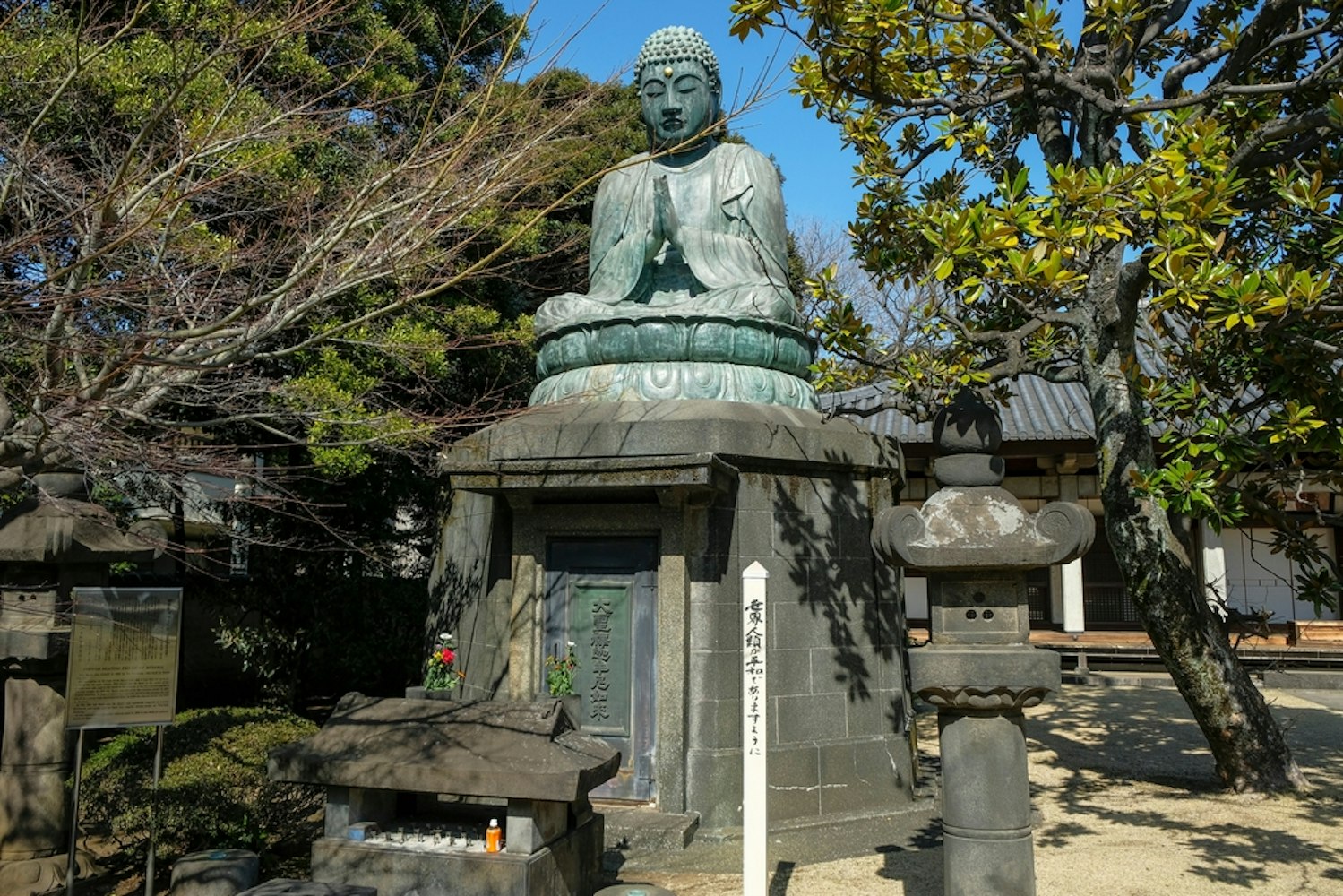
This Buddhist temple is a serene spot known for its Buddha statue and the historical ambiance of old Tokyo. Tennoji Temple, nestled in the picturesque east-end district of Yanaka, Taito Ward, Tokyo, presents a unique blend of ancient and modern elements.
This Buddhist temple is a renowned landmark in the area. As the oldest temple among the many scattered throughout Yanaka, it holds a special place in Tokyo's religious landscape.
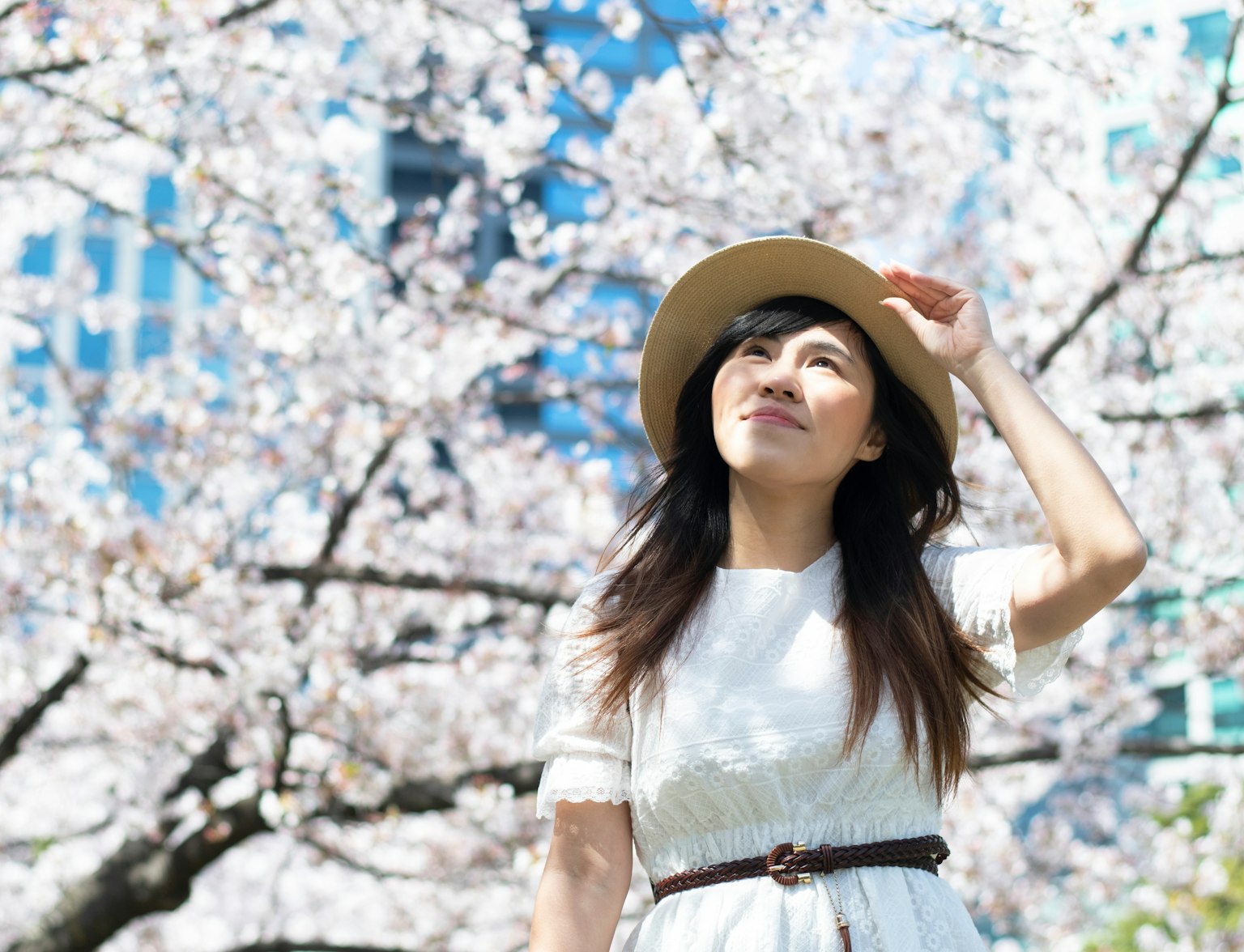
Enter the tranquil world of Tennoji Temple, where a serene Buddha statue is peaceful, surrounded by beautiful weeping cherry trees.
Tennoji's roots are in the Tendai sect of Buddhism, reflecting deep spiritual traditions. Despite its age, the temple exudes a refreshing modern twist.
Its Yanaka location adds charm, merging the serene temple atmosphere with the vibrant local culture. Visitors to Tennoji are treated to a unique fusion of historical depth and contemporary flair.
This temple is a testament to the enduring legacy and adaptability of Buddhist practices in Japan.
Belief/Faith: Buddhism
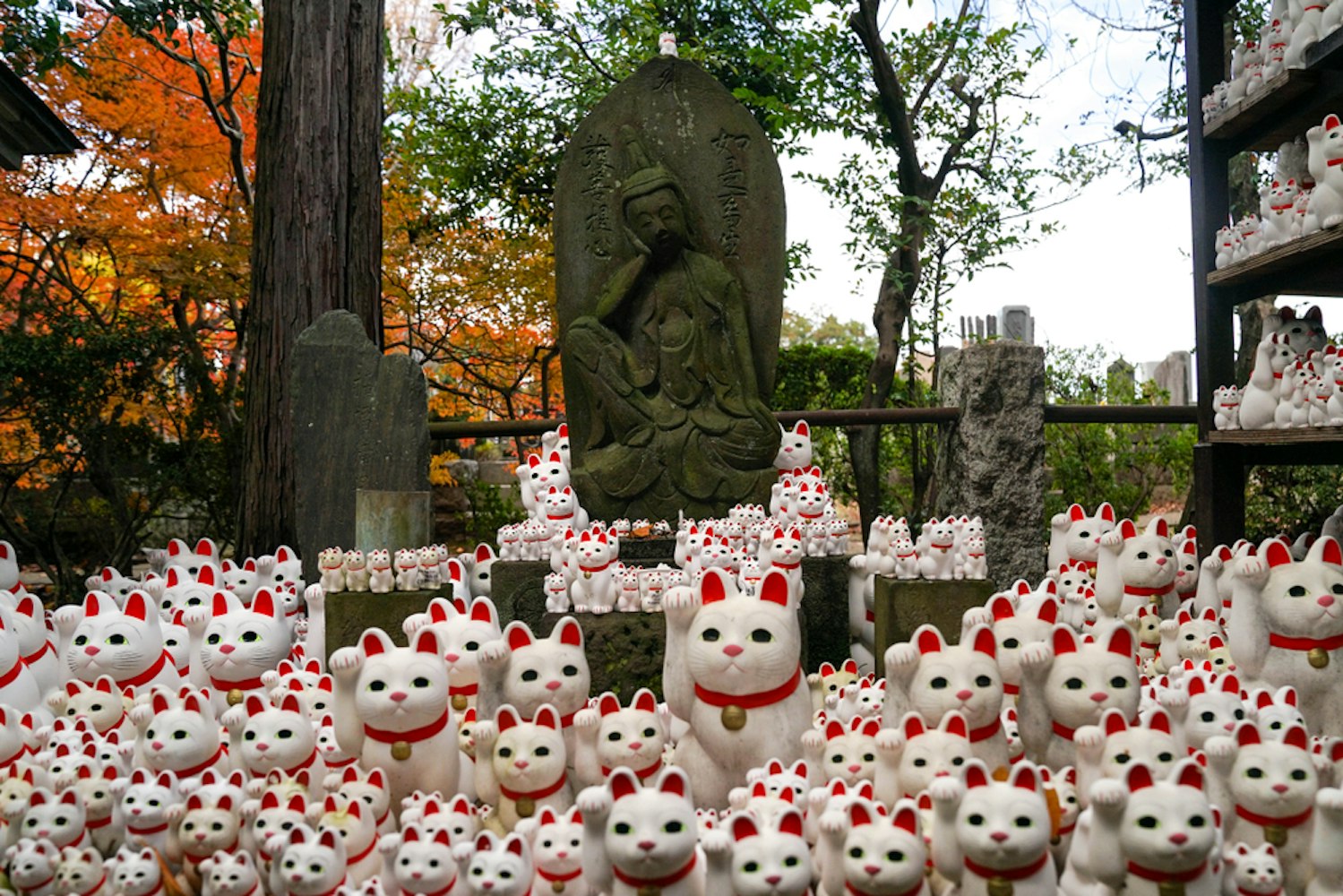
Celebrated as the birthplace of the Maneki-neko, or the beckoning cat, this temple is a quirky and spiritual visit. Gōtoku-ji, located in Tokyo's Setagaya ward within the Gōtokuji district, stands as a notable Buddhist temple.
It practices the Sōtō Zen tradition, a significant branch of Japanese Buddhism. Historically, it functioned as the Bodai-ji, a family temple for the Ii clan.
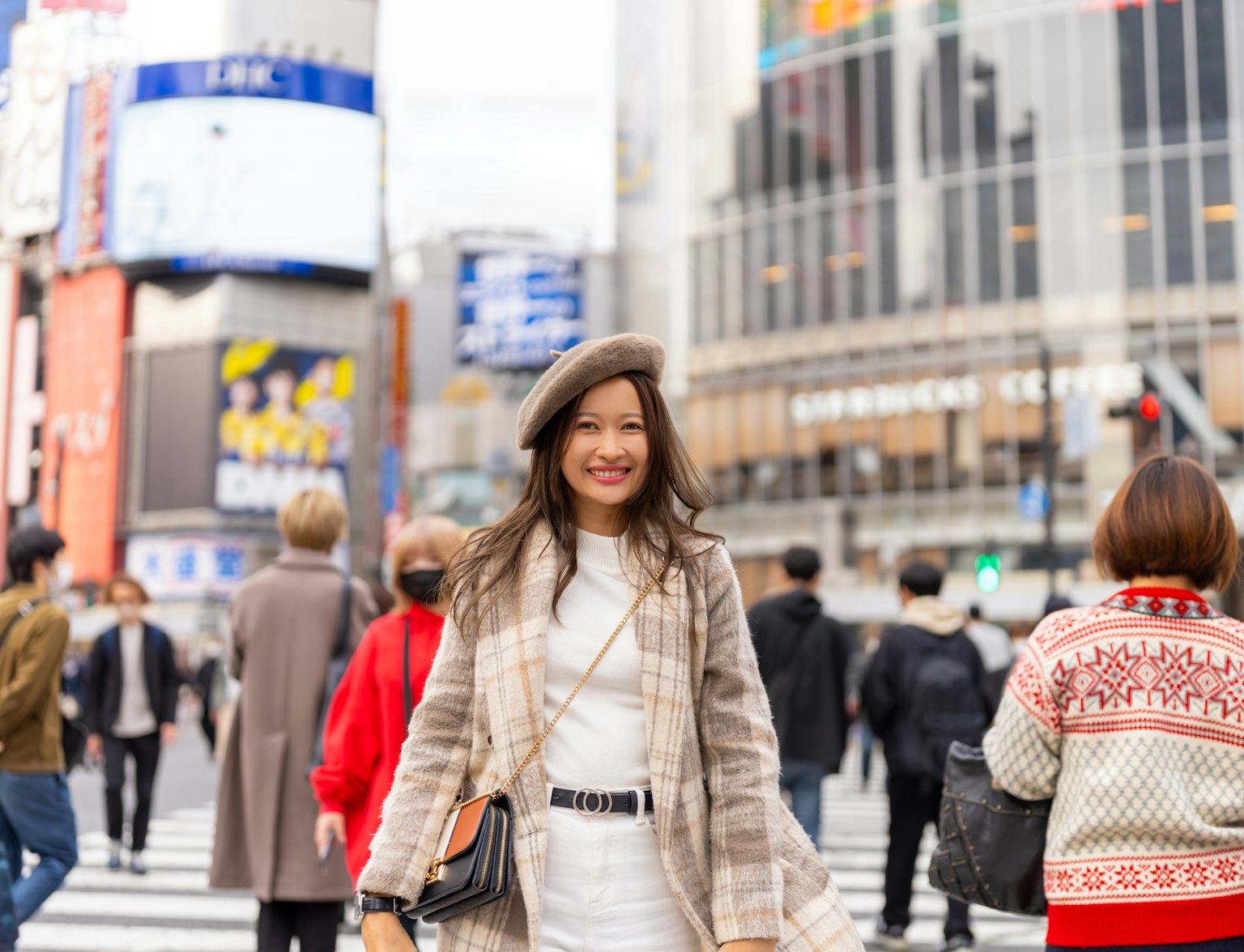
Include Gotokuji Temple on your custom itinerary.
The Ii clan, notable lords, ruled over the Hikone Domain during the Edo period. This temple is uniquely located in history due to its association with this influential family.
Gōtoku-ji is also widely recognized for its connection to the Maneki-neko. Because of this, it has earned the nickname "cat temple."
Its cultural and historical significance makes it a fascinating site in Japan's religious landscape.
Belief/Faith: Buddhism
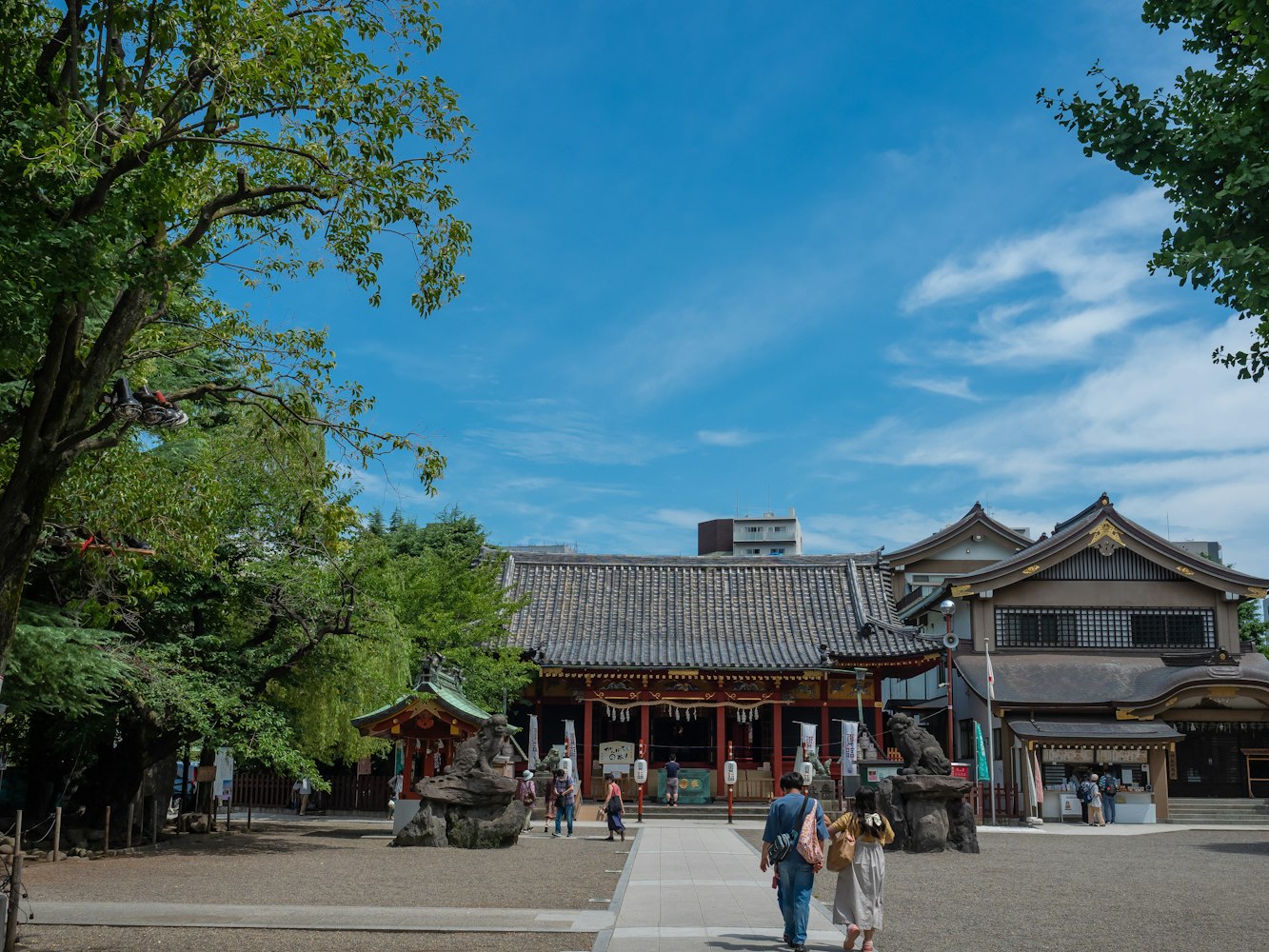
Adjacent to Senso Ji, this Shinto shrine is dedicated to the founders of Senso Ji. The fascinating blend of Shinto and Buddhist elements here is a source of inspiration.
Asakusa-jinja Shrine is a testament to the three men's divine transformation. Due to their remarkable contributions, these individuals were elevated to the status of gods.
Among them was Hajino Nakatomo, renowned for his intellectual prowess. Two brothers, Hinokuma Hamanari and Takenari, accompanied him in this honor.
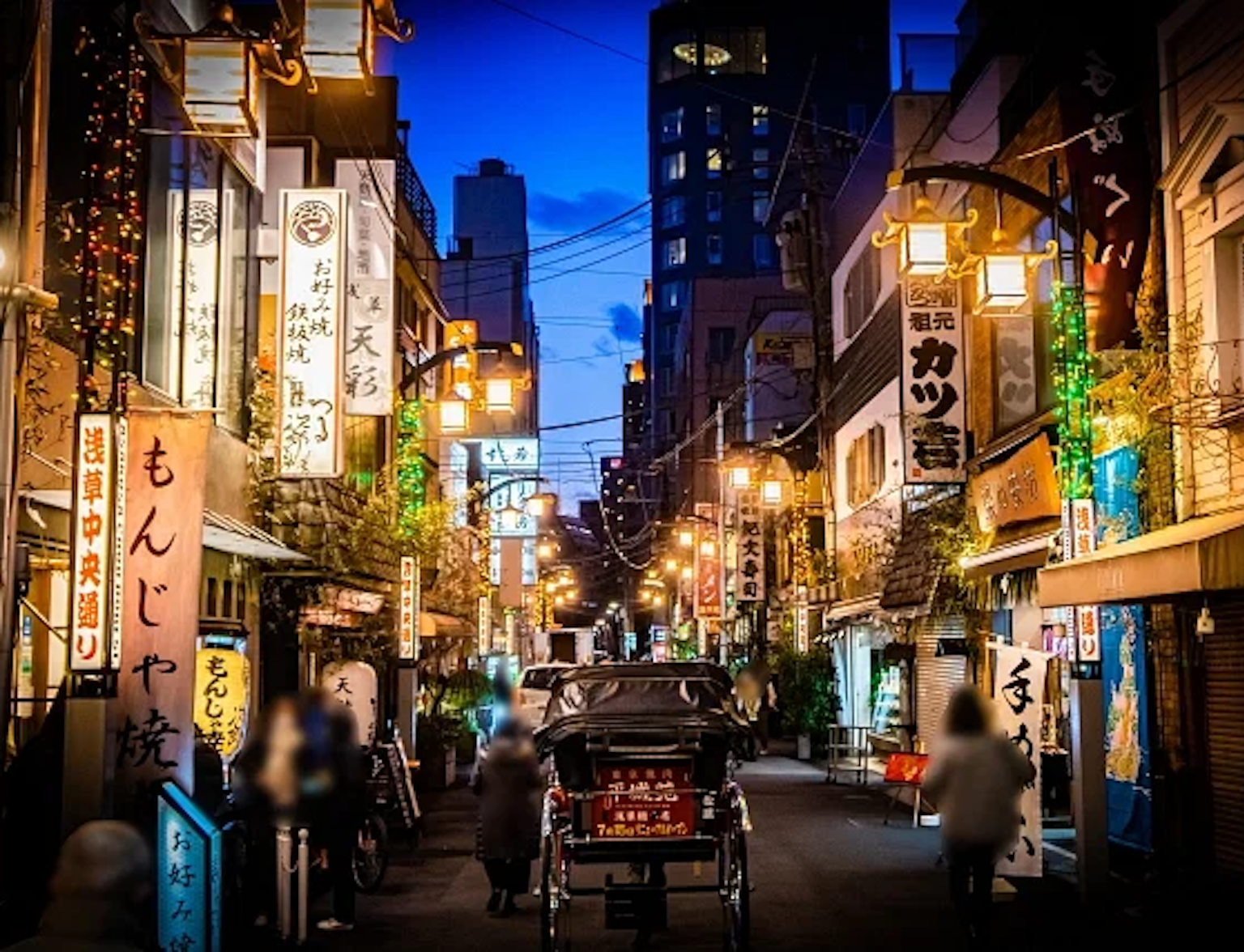
Visit Asakusa Jinja Shrine with this tour.
These siblings were not just ordinary fishermen; they played a pivotal role in the shrine's history. Their claim to reverence stems from a significant achievement.
They were instrumental in constructing the Sensoji temple, Tokyo's most ancient temple. Their efforts earned them lasting respect and adoration.
Belief/Faith: Shintoism
Tokyo's temples and shrines offer a glimpse into Japan's religious diversity. Shintoism and Buddhism are the primary spiritual paths.
Shinto shrines are dedicated to kami (spirits or gods) and celebrate nature, fertility, and ancestral spirits. Buddhist temples, on the other hand, focus on enlightenment and the teachings of Buddha. Sites like the Meiji Shrine and Senso Ji Temple reflect these beliefs in their architecture and rituals.
Respect the Customs: At Shinto shrines, bowing and cleaning your hands before entering is customary.
Embrace the Tranquility: Whether at Zojoji Temple or Nezu Shrine, take a moment to appreciate the peaceful surroundings.
Learn the History: Each site, like the Yasukuni Shrine or Sengakuji Temple, has a story. Understanding these enriches your visit.
Purification Rituals: Cleanse your hands and mouth at the purification fountain at Shinto shrines before entering.
Photography: Be mindful of photography restrictions, especially in sacred areas.
Offerings and Prayers: Light a cedar stick or offer a coin at Buddhist temples. At Shinto shrines, clap your hands twice and bow again to pray.
Dress Appropriately: Despite no strict dress code, modest attire is appreciated.
Explore Beyond the Main Areas: These sites' most peaceful and striking parts are often just a short walk from the main areas.
A journey through Tokyo's temples is through the heart of Japan's spiritual and historical landscape. From the serene Meiji Jingu Shrine to the historic Sengakuji Temple, each site offers a unique glimpse into the soul of Tokyo and the beliefs that shape it.
Whether you seek tranquility, historical insight, or spiritual awakening, Tokyo's temples and shrines are a must-visit on your travel itinerary.
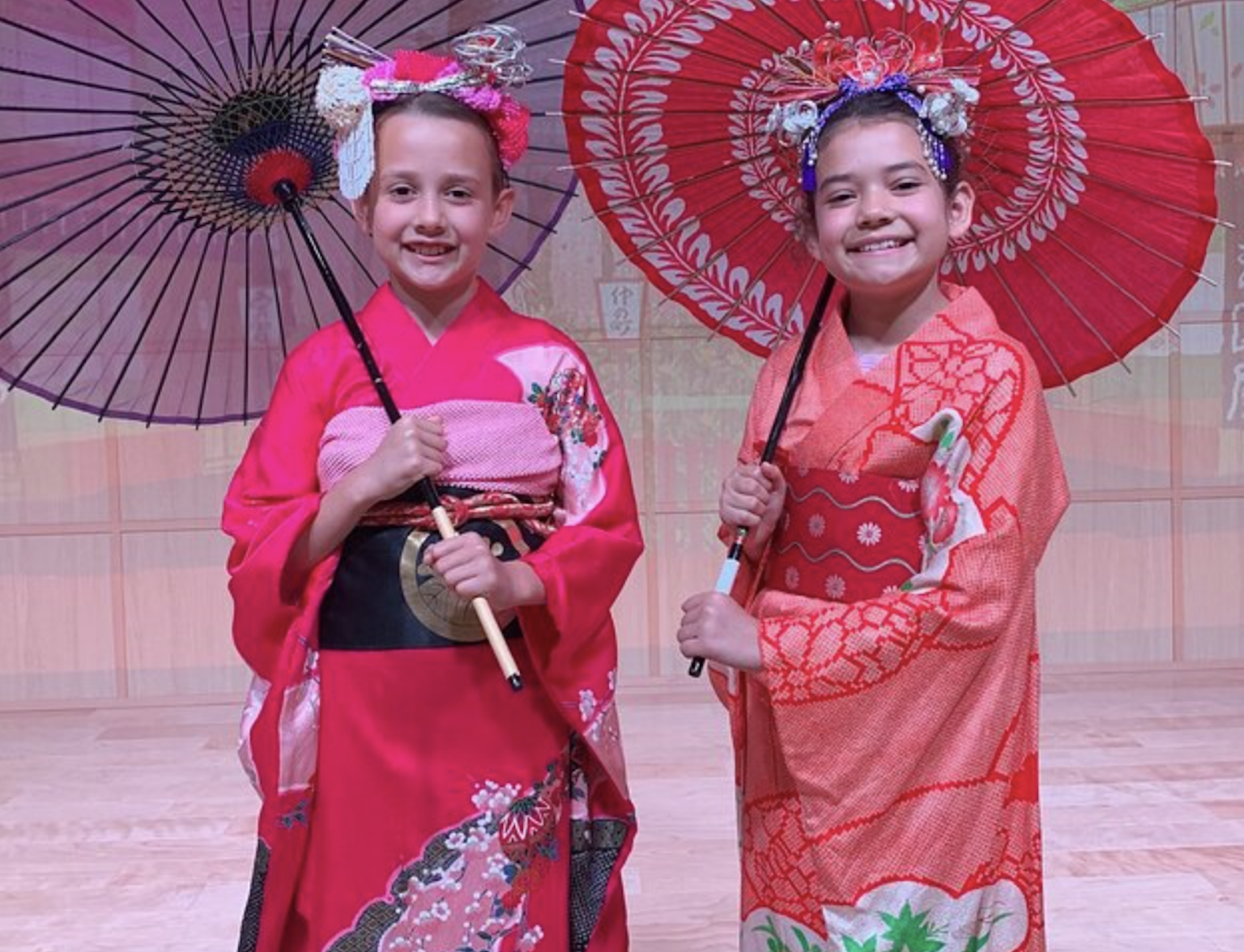
Experience Tokyo's cultural heartbeat in a day!



